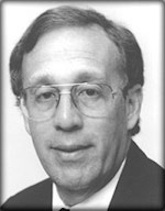
Dr. Stanton Samenow received his B.A. (cum laude) from Yale University in 1963 and his Ph.D. in psychology from the University of Michigan in 1968. After working as a clinical psychologist on adolescent inpatient psychiatric services in the Ann Arbor (Michigan) area, he joined the Program for the Investigation of Criminal Behavior at St. Elizabeths Hospital in Washington, D.C. From 1970 until June, 1978, he was clinical research psychologist for that program. With the late Dr. Samuel Yochelson, he participated in the longest in-depth clinical research-treatment study of offenders that has been conducted in North America. The findings of that study are contained in the three volume publication The Criminal Personality (Lanham, Md.: Roman and Littlefield) that he co-authored with Dr. Yochelson.
In 1978, Dr. Samenow entered the private practice of clinical psychology in Alexandria, Virginia. His specialty has continued to be the evaluation and treatment of juvenile and adult offenders. Dr. Samenow has delivered lectures, training seminars, and workshops in 48 states, Canada, and England. These presentations have been to a variety of professional groups including mental health, law enforcement, corrections, education, social services, and the judiciary. He has served as a consultant and expert witness for a variety of courts and agencies, including the Federal Bureau of Investigation, Dade County (Florida) Public Schools, Federal Bureau of Prisons, and the U.S. Office of Probation. In 1980, he was appointed by President Reagan to the Law Enforcement Task Force and in 1982 to the President’s Task Force on Victims of Crime. In 1987, President Reagan appointed him as a Conferee to the White House Conference on a Drug-Free America.
Dr. Samenow’s book Inside the Criminal Mind (NY: Times Books/ Random House) was originally published in 1984. A revised, updated edition was published in 2004 (NY: Crown Publishing/Random House). In 1999, a Japanese translation was published (Tokyo: Kodansha). In addition, he has authored numerous articles for professional publications and appeared frequently on national radio and television broadcasts, including “60 Minutes,” “The Phil Donahue Show,” “Good Morning America,” “The CBS Morning News,” “The Today Show” and “The Larry King Show.” Straight Talk About Criminals, was published by Jason Aronson in April of 1998.
In March, 1989, Dr. Samenow’s book about prevention of antisocial behavior was published. It is titled Before It’s Too Late: Why Some Kids Get Into Trouble and What Parents Can Do About It (NY: Times Books/Random House). The book was revised and expanded in 1999. The book was published in Japan (by Kodansha), in Taiwan (by Life Potential Publishing Co.), and in Poland (Warsaw: Proszynski i S-ka). The paperback edition was published during November of 2001.
In 1994, a three-part videotape and workbook featuring Dr. Samenow’s work was released (“Commitment to Change: Overcoming Errors in Thinking” distributed by FMS productions, Carpinteria, California). The materials provide an interactive program for use with inmates, students or staff in mental health, corrections, substance abuse programs, and educational settings. Early in 2000, a second series of videotapes and workbooks was released regarding identifying and addressing “tactics” which antisocial juveniles and adults deploy obstructing effective communication. The third series, “The Powers of Consequences,” was released during late July of 2002.
Dr. Samenow wrote a book based on his experience as an independent custody evaluator published in 2002. It is titled In the Best Interest of the Child: How to Protect Your Child from the Pain of Your Divorce.
A psychology podcast by David Van Nuys, Ph.D.
Podcast: Play in new window | Download
Subscribe: Apple Podcasts | RSS
A fascinating interview; I was wondering if people who are anti-social think they are good persons wouldn’t a good person view themselves as good as well. So who is right? Hmmm… Perhaps the good have a more realistic view that they are a mix of dark and light. The part of his assessment that was resonant with me was that those who are psychopathic are blame shifters to the extreme. I have never met a sociopath that didn’t have someone or something to blame their bad behavior upon. Of course I have only known three people that I am absolutely certain were true sociopaths but I suspect I have known more. M. Scott Peck in his book People of The Lie was the first to point out what seemed to me to be obvious after learning it, which is that those who are evil do all they can to hide it and if sufficiently intelligent and charming enough can become so sophisticated in their deception they could conceivably live without ever being detected. The difficulty in dealing with evil is those of us who are not diabolical cannot relate to a mind that is indifferent to the feelings of others. This is what I would say is the hallmark of a sociopath, complete indifference to the feelings of others except where eliciting a particular emotional response will serve their ends. I would be curious to know his views on why other cultures, collective in particular, have a lower incidence of sociopathy in their respective populations e.g. about 2% in some Asian cultures as compared with approximately 4% in our own. Finally I heard Dr. Laura Schlesinger recommend his book Before it’s Too Late to a caller on her radio show, perhaps next time you could interview him about that book. I lied, one more thing; I would love to hear his philosophical definition of evil.
Rick the insomniac
PS You Rock David, Great Interview
Using Dr. Samenow’s videos and books now and really learning a lot, would like to find 3 volumes together for better deal than Amazon.
Interesting interview. It’s just a shame that Mr Samenow’s theory fails in the same way most cognitive explanations of crime and deviance do. Non-existent quantifiable, empirical evidence to support such a broad claim, supported only by out-dated psychological references long since discredited by any professional worthy of his doctorate.